
How Do Butterflies Overwinter?
Published by Anne Altor on Oct 25th 2017
In cold climates, butterflies aren't out and about much in winter.
Where are they? How do they show up in spring or summer? Many butterflies pass through a few generations during the warm months, but the "fall brood" doesn't simply die off. We've talked about how monarch butterflies make it through winter by migrating. But migration is rare in butterflies. Here are other ways butterflies overwinter, with examples of species commonly seen in the eastern U.S.
Make a chrysalis!
Tiger Swallowtails (Papilio glaucus)
lay their eggs on a wide range of trees and shrubs, including wild cherry (Prunus spp.) and tulip trees (Liriodendron tulipifera). Caterpillars hatch from the eggs and eat the leaves. When mature, the caterpillar finds an appealing bit of tree bark, leaf litter or a plant stem. There, s/he builds a chrysalis and attaches it with a strong silk thread. The second generation of the year remains in the chrysalis in a dormant state for the winter. You can help ensure these beauties survive by leaving your perennials standing through the winter and by raking some leaves into your flower beds. This also create good insulation and mulch!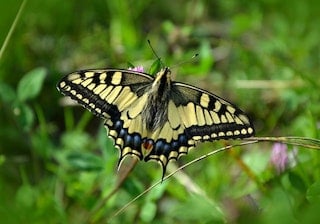
Tiger swallowtail butterfly
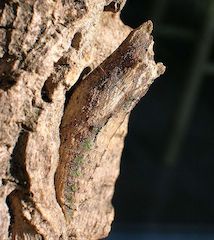
Tiger swallowtail chrysalis. Photo by TheAlphaWolf – Own work, commons.wikimedia.org
Black (or American) Swallowtails (Papilio polyxenes)
are found in fields, gardens, wetlands and other areas. Their host plants (where they lay their eggs) are herbaceous species including parsley, Queen Anne's lace, celery and dill (many plants in family Umbelliferae). Like Tiger Swallowtails, Black Swallowtails overwinter as pupa inside a chrysalis. The chrysalis may be brown or green to blend in with the color of its environment. Black Swallowtails attach their chrysalis to plant stems, sticks and rocks, usually within a meter of the ground.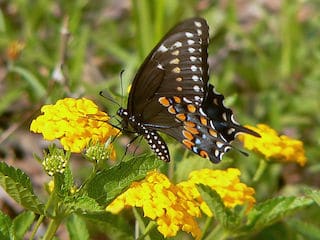
Black swallowtail. Photo by Greg Hume, commons.wikimedia.org
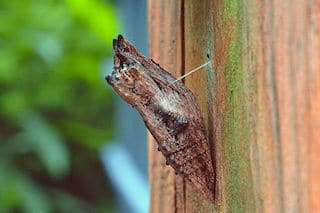
Black Swallowtail chrysalis. Photo by S. Detwiler, wikimedia.commons.org
Crawl into a seedpod…
Eastern Tailed Blue butterflies (Cupido comyntas)
have a different approach. Blues spend the warm months in fields, gardens, streamsides and open woods. They lay their eggs on flowers and leaves of clover and other legumes, which the larvae eat after hatching. Larvae that mature in fall crawl into seedpods to hibernate for the winter. In spring, they pupate and transform into butterflies.
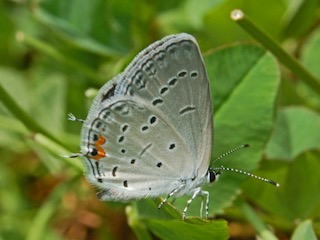
Eastern Tailed Blue. Photo by Hectonichus – Own work commons.wikimedia.org
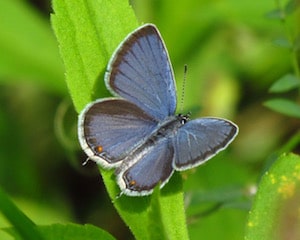
Eastern Tailed Blue. Photo by D. Gordon E. Robertson – Own work-commons.wikimedia.org
Curl up in a leaf…
Tawny Emperors (Asterocampa clyton)
stick together for the winter. Larval Tawny Emperors feed only on hackberry leaves (Celtis spp.). In late fall, groups of larvae crawl under a leaf and curl it around themselves to make a shelter. To get the leaf to curl, they wrap a silk thread around it, and the thread shrinks as it dries, pulling the leaf over. Emperor caterpillars often tie the leaf to a stem with silk to prevent their hideout from falling off the tree. In spring, the larvae emerge and go back to eating leaves until they're mature and transform into butterflies.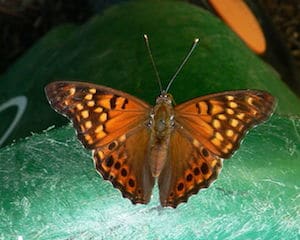
Tawny Emperor. Photo by Greg Hume, wikimedia commons
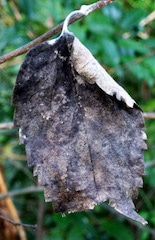
Tawny Emperor hibernacula. Photo by Donald W. Hall, University of Florida
Chill out as an egg…
Some butterflies overwinter as eggs.
A good example is the Banded Hairstreak (Satyrium calanus). This little butterfly feeds on flowers of milkweed, dogwood, sumac, clover and other plants. Females lay their eggs on oak, walnut, hickory, ash and boxelder twigs. The eggs remain dormant through the winter and hatch in spring.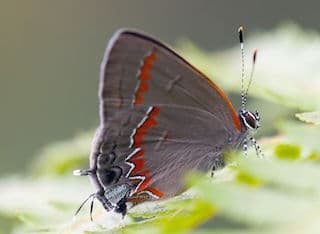
Banded Hairstreak. Photo by Umbris, Wikimedia Commons
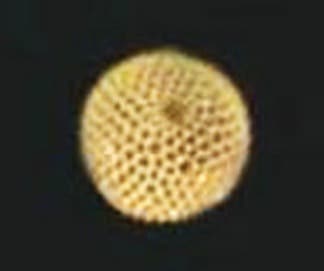
Red-banded Hairstreak egg. Photo by Jerry F. Butler, University of Florida.
Be a super cool adult!
Amazingly, some butterflies overwinter as adults.
One such species is the Question Mark (Polygonia interrogationis). Question Marks usually have two generations per year. Adults feed on fermenting fruit (drunken butterflies have been seen!), tree sap, dung and carrion. The fall generation seeks out sheltered areas where they spend the winter in a mostly dormant state. In spring, these adults come out of hiding and lay eggs on trees in woodlands and suburbs.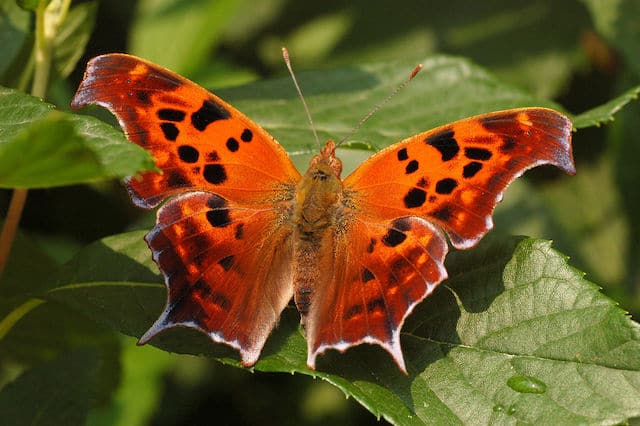
Question Mark. Photo by and (c)2007 Derek Ramsey (Ram-Man) Wikimedia Commons
Whether they overwinter as a chrysalis, larvae, egg or adult,
physiological changes occur that enable butterflies to survive the cold. The blood becomes enriched/thickened with sugars or alcohols, which lowers the freezing point; water content in the body decreases; and cellular water is bound to proteins to minimize crystallization.
Now that you know
that butterflies and other pollinators need plants and brush cover year round to complete their life cycles, what can you do to help? Learn about and use mowing strategies that protect habitat!
Sources:
https://www.butterfliesandmoths.org
